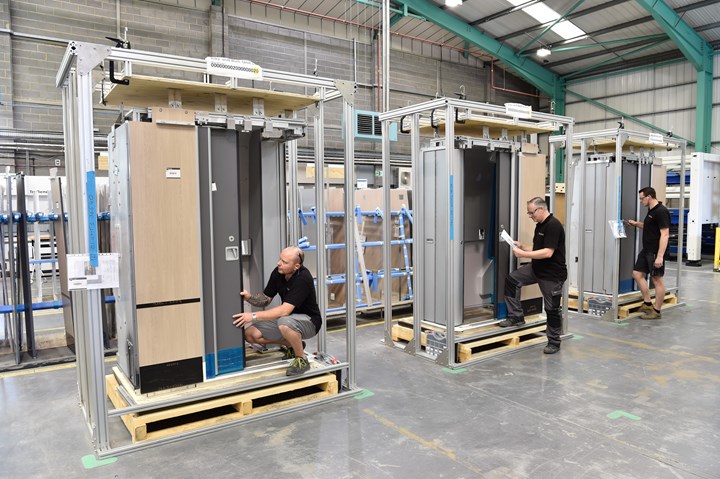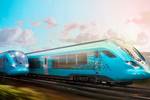TRB Lightweight Structures to supply composite components for Hitachi trains
New project to manufacture panels, partitions, doors and modified bike and bulk units for 23 trains that are set to enter service in 2022.

Composite rail doors. Photo Credit: TRB Lightweight Structures
Composites fabricator TRB Lightweight Structures (TRB Cambridgeshire, U.K.) reported that it will be supplying composite parts and structures for a new project as part of its long-term partnership with Hitachi (Tokyo, Japan), a global transport specialist for the rail industry. The project involves the manufacture of toilet panels, partitions and doors, as well as modified bike and bulk units, for 23 new trains that are due to enter service by 2022.
Hitachi, renowned for quality, reliability and innovation, chose to partner with TRB because of the company’s 40 years of experience and proven track record in the design and manufacture of high-quality, lightweight and durable composite rail components for leading train manufacturers. This serves as an extension of TRB’s existing relationship with Hitachi.
“Our established collaboration with TRB is a result of our shared commitment to long-term sustainability and the company’s ability to continuously meet our needs in terms of design and capabilities,” says Graeme Laws, commodity manager direct materials at Hitachi Rail. “This project is set to really improve travel for rail passengers in the U.K., and we’re glad to have TRB on board.”
Related Content
-
ASCEND program update: Designing next-gen, high-rate auto and aerospace composites
GKN Aerospace, McLaren Automotive and U.K.-based partners share goals and progress aiming at high-rate, Industry 4.0-enabled, sustainable materials and processes.
-
Jeep all-composite roof receivers achieve steel performance at low mass
Ultrashort carbon fiber/PPA replaces steel on rooftop brackets to hold Jeep soft tops, hardtops.
-
Co-molding SMC with braided glass fiber demonstrates truck bed potential
Prepreg co-molding compound by IDI Composites International and A&P Technology enables new geometries and levels of strength and resiliency for automotive, mobility.












